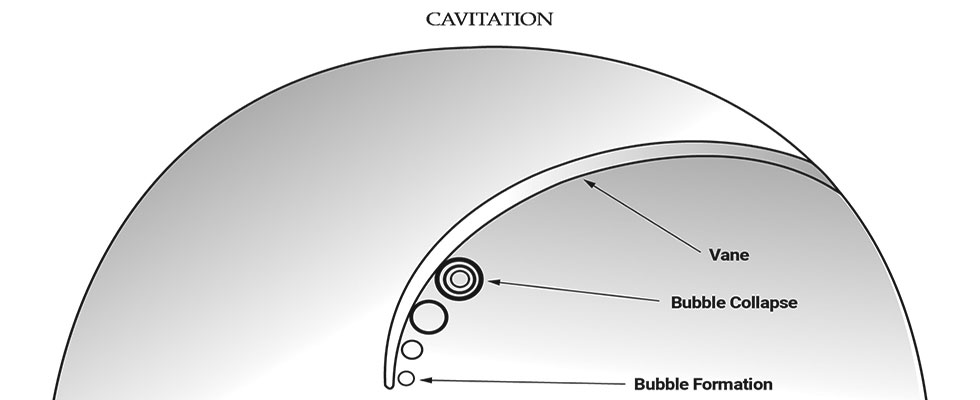
To make the term net positive suction head (NPSH) more accessible to pump engineers who may not understand how to design an impeller for NPSH or the exact details of the physics, I have tried to simplify it:
- NPSH is a measure of the absolute pressure energy present in a liquid. Pump engineers use this energy to help “feed” the fluid into the eye of the first-stage impeller. Pumps generally do not suck.
- NPSH is the sum of the total static plus kinetic pressure minus the liquid vapor pressure at the pump suction nozzle or impeller entry, which is expressed in terms of head.
There are two ways of expressing NPSH relative to a centrifugal pumping system:
- NPSHa—The net positive suction head available is the measurement of the amount of fluid pressure energy available from the system at the pump impeller inlet.
- NPSHr—The net positive suction head required is the measurement of the amount of fluid pressure energy required by the pump.
The NPSH available to the pump should be more than what the pump requires. If there is not enough NPSHa, the pump will cavitate. As a result, the performance and reliability can be compromised.

In an even simpler way to view it: If you do not have enough suction pressure for the pump, vapor bubbles will form and then collapse in the impeller. This, in turn, will impair the pump’s
performance (Image 1). The collapse location depends on the flow the machine is operating at and can occur on the front or the back face of the impeller. Collapsing bubbles cause great damage to the impeller blade (Image 2).
But this is not the whole story, and there is a further complication that must always be considered.
NPSHr Curves
NPSHr curves, as provided by the pump manufacturer, are generated using the data collected during a pump performance test. Determining NPSHr requires testing the pump over a series of carefully controlled, constant flow points and varying suction conditions in a test facility. The test lab operator sets the flow and then begins to introduce a vacuum on the suction side of the pump. This reduces the suction pressure in controlled increments. While reducing the suction pressure, the discharge pressure is closely monitored.
The Hydraulic Institute has established the industry standard for the NPSHr of a pump, and it is the NPSHa at a given flow rate and speed, which will create enough cavitation in the suction of a pump impeller to drop the developed head by 3 percent.
When this occurs, the suction conditions are recorded (flow and suction pressure) and plotted on the pump performance curve. This process is repeated for each flow until the NPSHr throughout the entire pump performance range has been recorded.
The NPSHr characteristic curve representing 3 percent head drop is also commonly known as NPSH3, but this is rarely stated on the curve.
The pump curve issued by the pump manufacturer shows the NPSHr needed to make the developed head drop by 3 percent due to cavitation.

It is important to remember that the NPSHr value that is plotted on the pump performance is the point at which cavitation has deteriorated the performance by 3 percent. Cavitation inception has occurred at a suction condition much higher than this.
For a pump to operate correctly, without cavitation, the NPSHa must be considerably greater than the NPSHr. Enough margin of safety should be provided over and above the value of NPSHr of the pump at the rated duty point.
Beware, as NPSHr curves in almost all cases represent the performance of a cavitating impeller.

